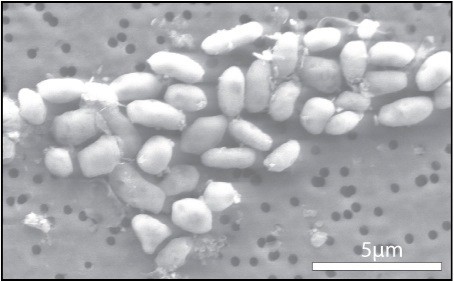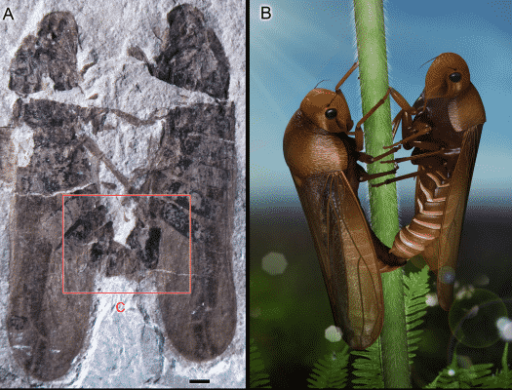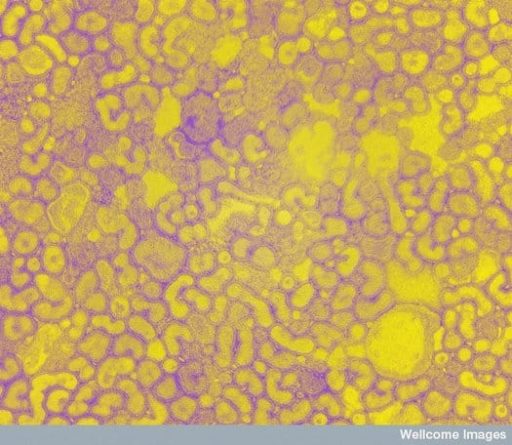NASA discovers microorganism that uses arsenic instead of phosphorous to thrive and reproduce,Which is life built with toxic chemical.Arsenic-Born Organisms is a building block of life along with carbon, hydrogen, nitrogen, oxygen, and sulfur, all integral to our DNA and RNA……
NASA-funded astrobiology research has changed the fundamental knowledge about what comprises all known life on Earth.Researchers conducting tests in the harsh environment of Mono Lake in California have discovered the first known microorganism on Earth able to thrive and reproduce using the toxic chemical arsenic. The microorganism substitutes arsenic for phosphorus in its cell components.
This finding of an alternative biochemistry makeup will alter biology textbooks and expand the scope of the search for life beyond Earth. The research is published in this week’s edition of Science Express.Carbon, hydrogen, nitrogen, oxygen, phosphorus and sulfur are the six basic building blocks of all known forms of life on Earth. Phosphorus is part of the chemical backbone of DNA and RNA, the structures that carry genetic instructions for life, and is considered an essential element for all living cells.
The newly discovered microbe, strain GFAJ-1, is a member of a common group of bacteria, the Gammaproteobacteria. In the laboratory, the researchers successfully grew microbes from the lake on a diet that was very lean on phosphorus, but included generous helpings of arsenic. When researchers removed the phosphorus and replaced it with arsenic the microbes continued to grow. Subsequent analyses indicated that the arsenic was being used to produce the building blocks of new GFAJ-1 cells.
The key issue the researchers investigated was when the microbe was grown on arsenic did the arsenic actually became incorporated into the organisms‘ vital biochemical machinery such as DNA proteins and the cell membranes. A variety of sophisticated laboratory techniques was used to determine where the arsenic was incorporated.NASA‘s Astrobiology Program in Washington contributed funding for the research through its Exobiology and Evolutionary Biology program and the NASA Astrobiology Institute. NASA’s Astrobiology Program supports research into the origin, evolution, distribution, and future of life on Earth.





The recent announcement by NASA scientists and their collaborators that the GFAJ-1 strain of the Halomonadaceae bacteria provides hints into the potential biology of alien life-forms and the response of the media and scientific community to this claim have revealed several disturbing trends. These include the desperation of a government-funded science agency to generate publicity at a time when its financial support is in jeopardy; the inadequacy of the experiments by these researchers to support their conclusions; the relatively poor peer-review by one of the most prestigious of scientific journals; and the extra-hype added by the mass media. One rather positive aspect of this affair is the rapid response of the scientific community to question and challenge the most poorly supported and far reaching claims. It is likely that they will be disregarded much faster than the previous announcement by NASA of petrified Martian life in an Antarctic meteorite.
A few of my colleagues as well as numerous bloggers have noted that the NASA publicity machine has been coincidently cranked up at a time when the next US budget, including the funding for NASA, is under question. The discovery of the model organism described in the Wolfe-Simon et al. paper in Science is actually not new. Since the mid-nineties, the ongoing study of various strains of Halomonadaceae bacteria and their respiration of arsenic at Mono Lake, the Aberjona Watershed and elsewhere has been reported by Dr. Ronald Oremland (the senior author of the Wolfe-Simon et al. paper) and independently by others.
The central claim of the new Wolfe-Simon et al. study is that arsenic can substitute for phosphorus to sustain the growth of the GFAJ-1 bacterial strain, and some evidence is offered that the arsenic is incorporated into macromolecules such as nucleic acids and proteins. The GFAJ-1 cells were cultivated in the near absence of phosphorus in the growth media in the presence of arsenic. However, the media used in the study apparently had about 3 µM phosphorus, and one wonders whether phosphorus may have also been introduced with the culture plates that may have been pre-washed with phosphate-containing detergents. In any event, the cultured GFAJ-1 cells were still observed to contain phosphorus at about 1% of the levels seen in cells grown in the presence of high phosphorus. Even under these conditions, bathing in medium containing arsenic, these cells still featured 100-times more phosphorus than arsenic. Moreover, the levels of arsenic incorporated into the phosphorus-depleted bacteria was not that much different from phosphorus-supplemented GFAJ-1 cells grown without arsenic. Ideally, a synchrotron X-ray analysis of arsenic in biomolecules should have been undertaken for both the phosphorus-fed and starved populations of the bacteria rather than just the phosphorus-depleted cells as was performed in the study.
Despite the speculations offered in the Wolfe-Simon et al. paper, no conclusive evidence was provided that any arsenic actually replaced phosphorus in the DNA backbone of the GFAJ-1 cells. To incorporate arsenic into nucleotides and proteins, the arsenic would have to be presented with the arsenic-containing equivalent of adenosine tri-phosphate (ATP), i.e. adenosine tri-arsenate (ATAs). No evidence was obtained for the presence of ATAs in the GFAJ-1 bacteria. In fact, I have been unable to find any reports of ATAs in any life-form from PubMed or Google searches.
While arsenic and phosphorus are highly related in the periodic table of elements, the arsenic atom is slightly more than double the molecular mass of phosphorus. As atoms get larger, the electronic structure of the atom, particularly those parts that participate in chemical bonds, become increasingly diffuse. Consequently, arsenate esters are very unstable and hydrolyze markedly faster than phosphate esters. This instability of arsenate ester linkages really restricts their utility in the synthesis of macromolecules like DNA. Furthermore, the instability of arsenylation of proteins, would precludes it from effectively replacing protein phosphorylation. Protein phosphorylation appears to be the major post-translational regulatory mechanism for the emergence of eukaryotic organisms and seems to be required for the development of multi-cellular organisms.
While the existence of stable ATAs is doubtful, it is more feasible that adenosine-diphosphate, mono-arsenate (ADPAs) might be produced that could fuel arsenylation reactions. Even if ADPAs exists, it is still difficult to reconcile the use of arsenate by a wide range of enzymes to replace all of the diverse metabolic and structural roles (e.g. nucleic acids, phospholipids, phosphoproteins) of phosphate in even bacteria. It is unlikely ADPAs would have a stable enough high energy bond between the gamma arsenic and oxygen atoms to serve as an efficient source of chemical energy. ATP is optimal in all biological systems on this planet with an intermediary position between the higher energy compounds from which ATP accepts phosphate and the lower-energy compounds from which it donates phosphate. Consequently, an organism that exclusively utilizes arsenic and not phosphorus would have a profoundly different metabolism with very different metabolites and macromolecules.
As a member of the wide-spread Gammaproteobacteria, the Halomondadaceae bacteria clearly do not represent an alternatively evolved family of life-forms, but are well adapted to endure extreme conditions. These organisms are also commonly dispersed in environments in which “normal” microbes proliferate, which is most probably where they originated. The GFAJ-1 bacteria actually prospered better in the presence of phosphorus. Those grown in the presence of arsenic and near absence of phosphorus became bloated in size by approximately 60%. This was due to the appearance of large “empty” vacuoles in the bacteria. It seems that this organism functions optimally in phosphorus, but tolerates arsenic. This is not surprising, since the concentration of phosphorus in the Earth’s crust is around 1000 parts per million (ppm), which is about 500-times higher than measured for arsenic. Such a relative distribution of these two elements is likely to be universal, as more energy is required to forge arsenic atoms than phosphorus atoms.
Many metals can poorly mimic each other as cofactors in enzyme-catalyzed reactions. This is why a few are highly toxic such as lead and mercury. The fidelity of enzymes for their optimal elements is not 100%, so it is not surprising if trace arsenic can replace phosphorus in the structures of small molecules and macromolecules. Many marine organisms, including clams and sea weeds can also accumulate arsenic. This is likely to be a protective response to reduce the threat of predation by animals that might try to consume them. Arsenic is particularly toxic in eukaryotic organisms, because amongst other many other problems, arsenic inhibits pyruvate dehydrogenase in the citric acid cycle and it uncouples oxidative phosphorylation in the mitochondria, both of which inhibit ATP synthesis. It seems probable that the Halomonadaceae bacteria have acquired the ability to tolerate arsenic, most likely to avoid being eaten. They may concentrate arsenic-containing compounds in vacuoles for this purpose, and they are known to excrete arsenic, presumably when it becomes too toxic for the bacteria themselves. This ability provides the opportunity for these bacteria to thrive in arsenic-rich environments where most other bacteria cannot.
The lessons from all of this hype from a US government agency, a peer-reviewed scientific journal, and the popular press will likely go unheeded. Unfortunately, too many research institutions that depend on public funding through government agencies and charity will continue to feel pressured to over blow their latest scientific breakthroughs to justify the massive amounts of financial support that they have received. However, with the increasing ability of the wider scientific community to rapidly challenge these assertions in the Internet age, they do so at the peril of their credibility.